Today, natural landscapes are particularly popular with the help of simple and all familiar plants. Most often, landscape designers and gardeners prefer wildflowers and shrubs that require minimum care efforts, while decorating the garden and a plot with their tender and unique beauty. Especially I would like to note such a herbaceous plant as flaxwill, which in its appearance is very similar to the garden lion zev.
The linam grass is a low plant growing on the fields and meadows, will become an excellent element of the natural design of the site and a rocky garden. At the same time, planting and care for this culture is so simple and understood that even a novice gardener will cope with elementary actions.
In the submitted article, we consider the main features and a botanical description of luminous, we note the characteristics of popular species of culture. We present important rules and nuances of landing and care for a grassy plant in its garden.
Features and Botanical Lincase Description
Simple meadow herbs can sometimes be undeservedly forgotten, although they can be unrecognizable to change any garden plot and do not require anything of unbearable actions and extensive costs. Linnik is a plant that has become increasingly appearing at the flower beds and in the gardens and it again began to conquer love and popularity among gardeners.
Linnik is an annual or many years of herbaceous plant, which belongs to a large family of sizesnial. However, even recently, this genus of plants, scientists included in the Norichnikov family. Research in the field of genetics, which were conducted by various scientists, including Russian breeders and nerds in 2013, led to such a change. According to 2013, this plant includes approximately 98 different varieties, but according to informal records, culture can have about 100-150 different varieties.
Linaka or Linarium (LINARIA) Translated from Latin literally denotes "like flax", which is directly related to the appearance of culture. Leaflets of some varieties of liners are very similar in its structure and shape on flax leaves. In addition, this herbaceous plant is very similar to the well-known lionic zev or anti-crime, which is a Garden Lion Zev. These two plants unites the overall structure of inflorescences and belonging to one family of sizesnial. Although the flax flower is ordinary and is considered a plant that few people notice, but it has become quite widespread worldwide. The natural area of \u200b\u200bhabitat of this herbber culture is considered the territory of the Mediterranean, most species and in Europe are found, and in the African continent. In addition, you can find a linen in the wildlife of the Caucasus, Central Asia, Kuril and Sakhalin. Prefers to settle in mountainous areas, at the ditch and along the ravines, on pastures and forest edges.
Lincase description:
- Linaka or Linarium is a herbaceous plant that can be annual, two-year and perennial and is considered a field flower.
- Many varieties of flaxes are deservedly considered decorative plants, in addition, this culture is a medicinal and in many characteristics can easily be compared with more spectacular decorative blooming plants.
- Linnut of any variety has a thin and actively growing styling rhizome. Some plants have a root can be rod. Thanks to the creeping roots, the flax grass grows perfectly on any basis, for which it is often called weed.
- Depending on the variety, this herbaceous plant in height can reach about 10-100 cm, which allows linsery to plant in various garden compositions.
- Stems are predominantly reprehensive or weak, thin and sufficiently dense and elastic. The lowest varieties with a height of up to 10 cm are formed by fluttering shoots, so gardeners often use such plants as soil.
- In diameter, the plant can also significantly expand. On average, its volumes will depend on a particular variety, which is approximately 25-150 cm. This must be taken into account when growing culture on its site.
- The branches and stalks of flaxes have a gray-green shade and densely covered with leaves, which may also differ depending on the type of this plant.
- The leaves may be the next or collected in small mutations, while the sheet plate does not have a stuff. Lincase leaf shade saturated, herbal and green.
- Linear sheet plate, like a flax plant, or linear lanceal. Sometimes you can meet varieties with leaves that have small jar on the tops.
- The surface of the plate is smooth and brilliant with a clearly distinguishable one vest.
- The length of one sheet on average can be 2-7 cm.
- Flowers are considered the main decorative value of flaxes, which in their structure are very similar to the inflorescences of the lion's oz.
- Small flowers can be collected in different inflorescences: Golly, creeps, blissful.
- Linseed flower is two-way, and the upper part is divided into two stakes, and the bottom is the bulge.
- Petals of grassy plants can be painted in white, yellowish, pink, red or purple shades.
- The flowering is long enough: it starts at around at the beginning of summer and lasts until the autumn.
- After all the inflorescence is swinging, in their place they begin to ripen the fruits of a rounded or oblong form, within which there are flaxseed seeds.
- The seeds are flat in the form of a disc, very small, so in 1 gram of seeds can be up to 20 thousand pieces.
- When growing this plant, it is important to remember that it is poisonous and you need to be extremely careful.
- The flaxwill is considered an excellent plant for growing in any garden, as it is distinguished by unpretentiousness, drought-resistance and perfectly transfers harsh frosts.
- Today, gardeners use linen of various varieties for rocky gardens, alpine slides, for the formation of borders and as soil plants.
Lincase types: basic characteristics
As noted above, today there are no accurate and reliable data on the number of existing flax varieties or linaria. It should be noted that not all of them are grown as garden plants, so when choosing a variety it is important to be extremely attentive. Consider the features of the most popular and sought-after types and varieties of flaxwalls.
- Alpine flaxwill. It is a herbaceous perennial plant, which grows in the form of a soil industry and reaches a height of only 10-20 cm. This bush generates a small dense pillow, in the diameter of an increase in about 20-25 cm. Short stems are covered with oblong leaves of gray-green color. Sheet plate is smooth and fleshy. The bloom of the variety begins approximately at the end of May or in early June. The length of one flower is an average of 2 cm. Petals are painted in a purple-purple shade with orange zev.
- Linnik or Linaria Dalmatskaya. The plant of this variety is considered one of the tallest in all kinds, since the stems can reach a height of 1 meter. An herbaceous bush has a sufficiently dense and neat shape, in diameter reaches 50 cm. Flowers bloom on the tops of the stems in the form of a corolmon-shaped inflorescence. One flower in length reaches about 2-4 cm. Painted into a saturated yellow color with orange zev. The variety does not tolerate the winter and cultivated as an annual.
- Linnut Moroccan. It is an annual herb plant, which in height can maximize 35-40 cm. The bush is formed by reprehensive stems, on the tops of which are blooming colossal inflorescences, consisting of small colors of a purple-purple shade with orange yawn. This kind of flaxus includes several very decorative varieties: carmine - a plant with pinkish colors; Excelsior - Flowers in various shades of white, yellow, red; Ruby King - Forms burgundy scenery.
- Linnut purple. It is also a tall type of linarium, plant stems can reach a height of approximately 90-100 cm. In our cool climate, it is most often grown as an annual herbaceous plant. Flowers with small flowers of light pink or purple shade, which are assembled in loose-shaped inflorescences.
- Linnut Troyptichi. This amazing variety of Linalarium received its name from the famous scientist Lynne. It was he who saw the similarity of flowers with a pigeon's head, which hid the beak under the wing, and in each inflorescence there are three such flowers - from here and the name of the flax of the Troophech. In height, the plant reaches about 70-80 cm, pleases the eye with light pink flowers, dissolved on the tops of the renovative stems.
- Linaka ordinary. This type of linarium is considered the most common and famous, his bushes can be found even in the wild of Russia. This is a perennial grassy plant, which, thanks to its powerful rhizomet, quickly grow up and forms small curtains. In the height of the flax, the ordinary can reach about 30-45 cm, while in diameter it grows up to 60 cm. Stems in the grass branches, which creates a volume of the plant. They are thickly covered by the oblong leaves of the gray-green shade. On the tops of the stems blooms the flowers of a yellow shade with a darker yawn, which are assembled in a slight loose cruise formation of a busy shape. This type of flaxwood perfectly transfers harsh frosts.
- Linnut Zimbalyaria. This is a rather rare and original look of flaxes, which has a bright and memorable appearance. It is a soil industry, which is most often used for landscaping walls. Thanks to noded sockets, the plant is rapidly rooted and expands. The leaves of this type of heart shape are very reminded by the foliage of ivy. Flower with lilac or purple inflorescences.
Lincase application
In landscape design, this amazing plant is used to create bright and unusual natural compositions. However, increasingly, gardeners grow linen for medical purposes, as this is a herbaceous plant for a long time is considered valuable medicinal grass. The plant contains a large amount of vitamin C, tannins, many alkaloids, carotene, pectins and organic acids that are so necessary for the human body.
Infusions and decoctions using this grass are used for problems in the operation of the gastrointestinal tract, with different inflammatory processes of the gallbladder, with liver diseases. In addition, lambins are used for outdoor use as a lotion and lotions.
To get as much beneficial substances as possible with linseed grass, it is important to know when you need to collect the stalks of the plant. Peak falls on bloom when the grass accumulates the maximum amount of vitamins and minerals. It is at this time that it is worth cutting the stems with inflorescences. Dry them in a ventilated room and stored in paper bag.
Linen breeding: the most common ways
Linaka or Linarium is a field herbaceous plant, which is often taken for ordinary weed. As weed, this plant is growing and does not require any particular conditions or rules of cultivation. Therefore, it is possible to conclude that it is not difficult to dilute on your site, it is not difficult at all, the main thing in this issue is to know the basic variants of the reproduction of linas. Almost all varieties of this culture can be multiplied by seeds. Some species are perfectly multiplied vegetatively, for example, the division of the bush or green cuttings. Consider the main features of these options.
Seed breeding lincam
- This option is used most often, as in the end allows you to get a large number of young seedlings at once. In addition, many types of flaxes easily multiply by self-sowing.
- First of all, each gardener should think about the purchase of planting material. High-quality seeds can be bought in any specialized store or, as an option, you can assemble seeds yourself from an adult plant.
- The seeds of this plant are very small, they do not lose their germination for 5-6 years.
- Before boarding, experienced gardeners are recommended to conduct a stratification process, thanks to which the percentage of seed germination will increase. For this, the dried flaxseed seeds at about the end of January or in early February is mixed in moistened sand, placed in a container or bag. After that, they are placed on two months in the refrigerator.
- Further, after the expiration of the stratification period, the seeds are removed and in March-April are sown into specially prepared containers.
- To do this, you can take small plastic cups or large boxes. It is recommended to fill them with a soil mixture consisting of peat and sand.
- Since the seeds are very small, it is not necessary to plunge them. It is enough just to dispel them on the surface of the soil and moisturize from the spray.
- After that, the boxes need to be covered with a film or glass to create greenhouse conditions. Further containers with seeds need to be put in a warm and well-lit place.
- After about 1 week, the first shoots will appear, after which the glass is cleaned. In the future, they need careful care, including watering and venting.
- The grown seedlings need to cut forward, and by the end of May, when the threat of morning frosts passes, the strengthened plants can be planted at a permanent place in open ground.
Linen breeding with rhizome
- Some perennial flaxes can be multiplied by fissioning rhizomes. This is a fairly simple and effective way to cope with any gardener.
- It is necessary to carry out such a reproduction in the spring in plants that have grown quite strongly and require rejuvenation.
- To do this, carefully sink from all sides an adult bush of liners and carefully pry it with a pitchfork or a shovel, while trying not to damage the root system.
- Slightly shake the roots from the soil, after which they divide the rhizome into several parts with a sharp knife or a secateur. It is important to take into account that each decene should have a sufficient number of roots and stems.
- Received parts of the plant immediately fall out in the prepared wells.
Breeding lincam cuttings
- This is another way of breeding lincam, which is used for perennial tall species.
- Conduct it in the spring or summer.
- To do this, it is necessary to cut small pieces with a length of approximately 7-10 cm with an adult.
- Bottom leaves need to be cut off.
- Next prepare containers with a soil or place in a small greenhouse.
- The cuttings are planted at some distance from each other and covered with a plastic bottle on top.
- Care of cuttings is regular moisturizing and ventilation.
- When young leaves appear on plants, the shelter can be removed.
Lincase landing - phased process description
The cultivation of a linser is to fulfill the easiest and most well-known actions, so everyone can put on its plot. Consider important rules and nuances of the main stages of planting plants in open ground.
Stage 1. Selection and purchase of linseed planting material
- First of all, if you wish to acquire any kind of linen, it is important to think about choosing and buying a planting material.
- You can buy liny in any specialized garden shop or in a nursery where professionally deal with the breeding plants for sale. In such a place, you will certainly acquire not only high-quality seedlings or seeds, but also receive advice on the growing plants in your climatic conditions.
- In garden stores you can buy flaxseed seeds, as well as finished seedlings or seedlings of perennial plant species.
- Before buying, it is important to examine the planting material with a special care. If you buy seedlings, seedlings should be elastic and green, without spots and yellowness. When buying seedlings, the soil in pots should be clean and moisturized.
Stage 2. Selection of place and soil preparation for flax
- Although linas is considered an unpretentious field plant, however, it is important for full growth and flowering to choose the perfect area.
- This plant prefers to grow in open places with plenty of sunlight. Some types of flaxes can grow in small shadows, but with a large shading, the development of culture will be slowed down.
- It is also important to choose a place on your garden area with a strong wind. At the same time, special attention should be paid to the location of the groundwater, because the flaxwill does not like stagnation of moisture in the roots.
- For normal growth, flames are suitable or driving soils with a neutral reaction.
- The soil is recommended loose and lightweight, well-drained and melting and oxygen.
- Before boarding, it is necessary to carefully switch the selected area, while the peat and complex mineral fertilizer is introduced into the ground. After that, the place is fried and smoothed.
Stage 3. Lincase landing process
- In the open ground linsery planted in spring at about late May, when the threat of returnable morning frosts.
- At a pre-prepared place, it is necessary to prepare the landing wells, between which it is necessary to leave a sufficient distance. For different types, the distance between individual seedlings will be different. On average, it is 25-40 cm.
- To prevent stagnation of moisture in the roots on the bottom of each well, you can pour a little gravel or small stones as a drainage.
- Next, carefully remove seedlings from the soil or seedlings from the container and place in the landing pit, cautiously sprinkled with the soil.
- After landing, young plants need to be abundantly pouring.
Stone growing agrotechnics: secrets and nuances of care
Linak care requires minimal, so it is not difficult to grow in its plot.
- Watering. Linaka or Linaria is considered a drought-resistant plant, but at the hottest time it is still necessary to water. At the same time, watering should be moderate.
- Swimming and weeping. After each watering the soil around the bush, it is important to neatly loose, because linas loves to grow on light and loose soils. You need to loosen carefully not to damage the roots. At the same time, we need to remove weeds that can interfere with the growth of lincam.
- Feeding If you put liny on fertile soil, then the plant does not need a plant.
- Trimming. Experienced gardeners are recommended to trim faded buds to extend the total bloom of linseed and possibly form a second wave of flowering.
- Shelter for the winter. Some perennial flaxes are poorly tolerated in winter, so before the onset of cold weather it is important to trim the stems under the root and on top cover all the plant with foliage and branches.
Stock Foto Linenies in landscape design
According to numerous reviews, flaxwill is an unpretentious and awesome plant, which will not only be an excellent decoration of any garden, but also useful to any gardener as an excellent medicinal product.

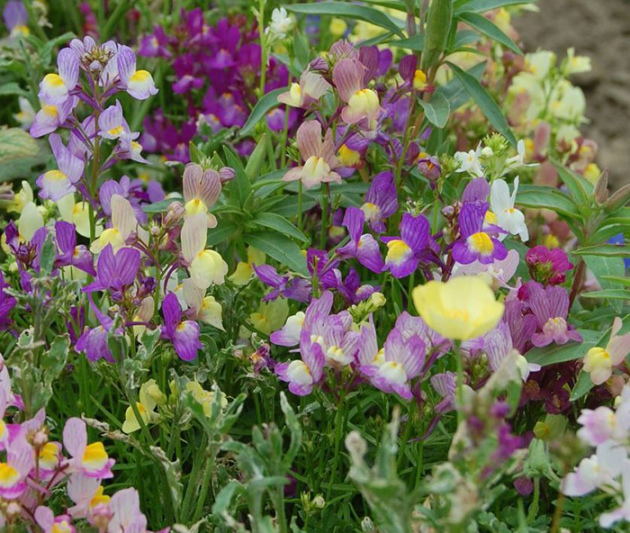

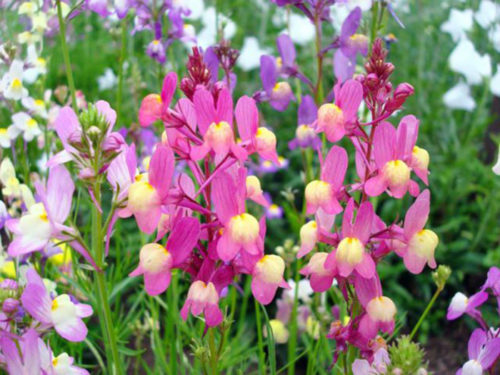
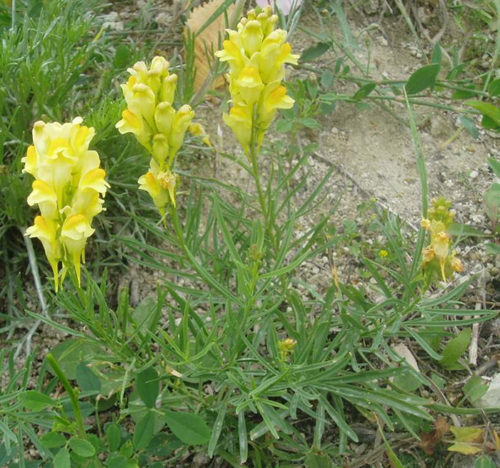
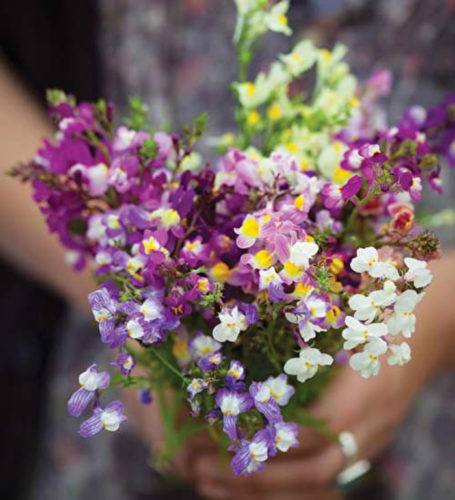
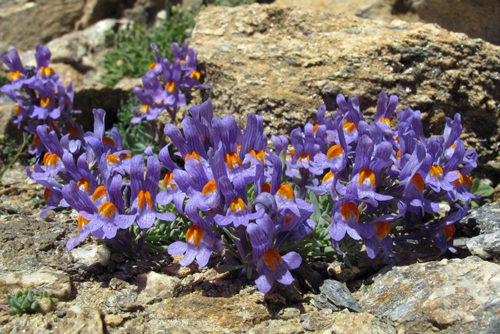

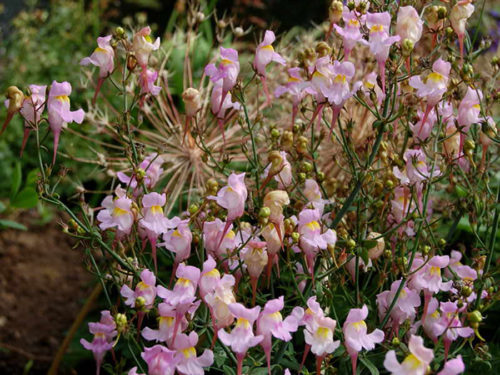
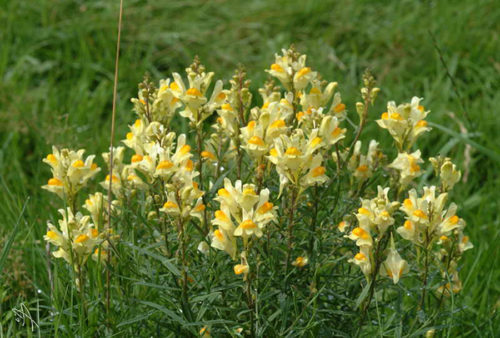
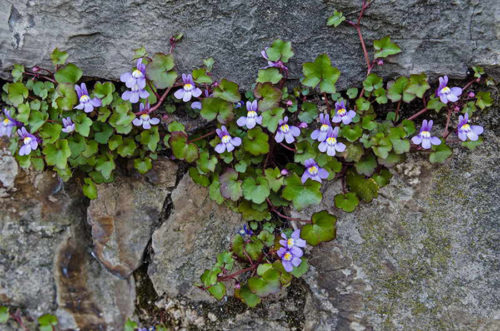
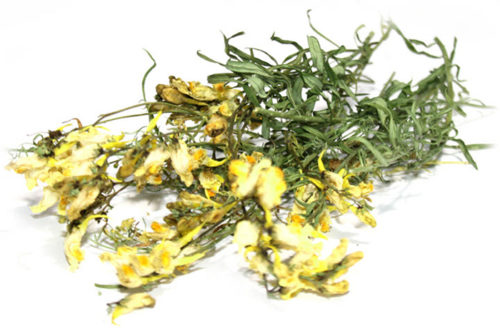
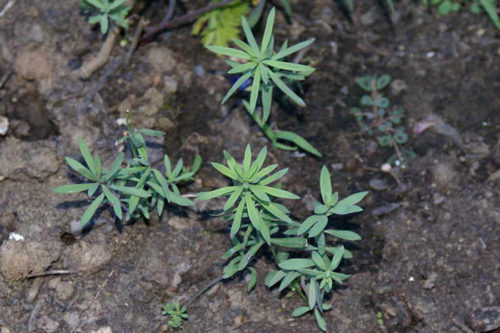
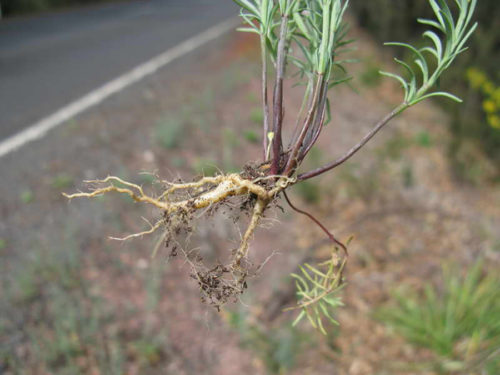
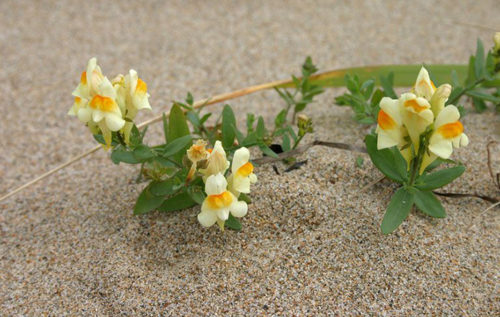
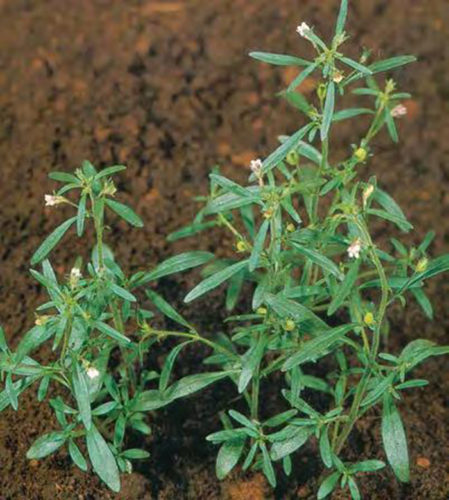
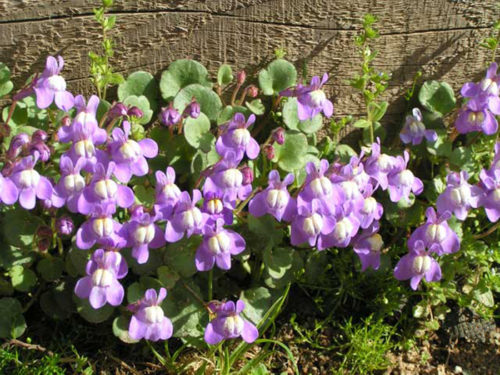
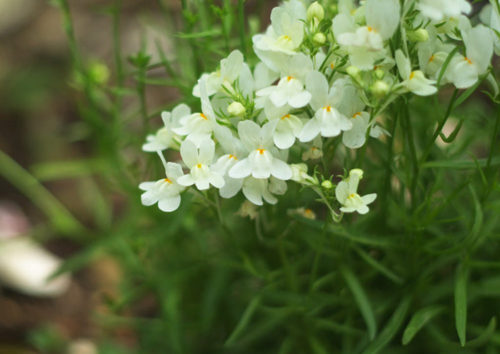

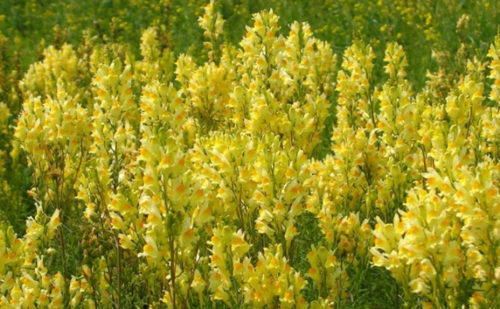

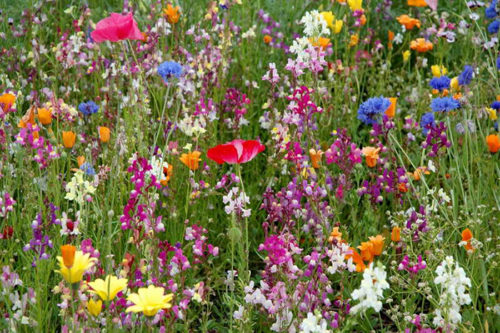












 Start a discussion ...
Start a discussion ...